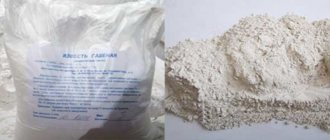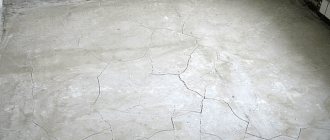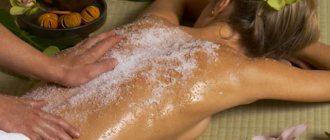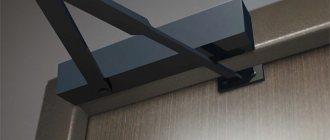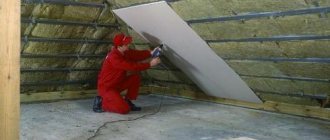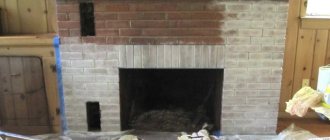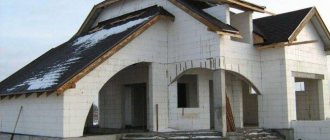Traditional types of heat-insulating materials have their own specifics. It is generally accepted that to obtain a sufficient effect it is necessary to install thick insulation. In this case, problems arise with finishing, difficulties with installing hanging furniture or equipment.
Often, the installation of thermal insulation becomes the reason for the non-use of surfaces convenient for placing hanging objects or for laying communications. Sometimes it is impossible to change the surface level, and insulation becomes impossible.
However, today there is an effective and practical way to solve the problem - applying heat-insulating paint. This is relatively new material that should be examined more closely.
What is liquid thermal insulation
Let me start with the fact that the development of this product has been carried out since the seventies in the military space industry of both our country and America. A lightweight material was required, but with unique heat-insulating properties. Today, all advanced technologies have migrated into our everyday lives precisely from the military industry. And warm paint in this case is no exception. Now all the best is for peaceful purposes.
Insulation paint is a polymer binder made of acrylic or latex. It also contains fillers made from the smallest ceramic, glass or polymer beads and various additives that determine different areas of application. In a word, this is a complex chemical compound, the development of which took a lot of time and money.
How does modern insulation paint work?
Due to its unique properties, liquid insulation already begins to work at a thickness of 1 mm. This breaks the whole stereotype in our usual insulation. After all, we are used to the more the better. In this case, no more is needed. 1 millimeter of heat-insulating paint is approximately equal in thermal insulation to 5 cm of mineral wool insulation. Agree, this is a worthy indicator.
Once upon a time, while studying at school, we were taught that vacuum is the best insulator. Sound, heat, and electricity do not travel through it. This explains the phenomenal effect of using heat paint. Since there is a vacuum in the microscopic ceramic balls, the result is a kind of mini-thermos, of which there are millions, and maybe billions.
Due to such a complex molecular structure, thermal energy is reflected. All three types of heat transfer, namely convection, conduction and radiation, are almost completely reflected. The protected surface always remains pleasantly warm.
Thermal insulating paint for walls: composition and scope of application
The composition of paints for thermal insulation is a mixture of:
- fillers;
- evacuated glass beads;
- water;
- acrylic-based dispersions;
- fiberglass;
- foam glass;
- perlite (in expensive types, perlite is replaced with ceramic microspheres).
Scope of material application:
- facades;
- pipes, including heating mains, water supply, gas;
- heating boilers;
- insulation of tanks and industrial equipment;
- walls in the apartment;
- basements.
The paint is applied in a relatively thick layer (4 mm), and therefore its use can replace several millimeters of external insulation or serve as an additional heat preservation system.
The condition for the thermal insulation function is an even layer around the perimeter, and therefore it is better to use a spray gun to evenly distribute the viscous consistency
Surface preparation
Before applying paint, it is necessary to properly prepare the surface. On a dirty, uneven base, the coating will not last long, and therefore all efforts and financial costs will be in vain.
Dust, dirt and oily formations are carefully removed from the surface. All cracks and cracks are sealed. They also get rid of uneven surfaces by using a metal brush, grinder or sandblaster.
Note! In the case of concrete, the surface should be cleaned of the so-called “cement laitance” - dust, which greatly impairs the adhesive qualities of the coating.
When the surface is cleaned and leveled mechanically, a primer is applied. VL-02 or VL-023 are most often used as priming compositions.
Functional Features
The quality of thermal protection of thermal paint directly depends on the applied layer and the number of stains. However, it is also not recommended to apply an excessively thick layer; the best option is 2-4 paintings, no more than 6 mm thick. The number of layers depends on the type of heat-insulating liquid material, as well as on the type of surface to be applied. The service life is 12-40 years, and the temperature characteristics are -70°C, +260°C.
Main advantages
The main advantage of liquid insulation for work inside buildings is thermal insulation without reducing space. It is important to note the material’s resistance to temperature changes, which occurs in winter during the heating season: it’s minus outside and plus inside, condensation collects, which forms a favorable environment for the development of fungus. Additional benefits:
- environmental friendliness - the paint does not emit harmful toxic compounds at high temperatures and does not react with other building materials;
- saving on heat bills due to thermal insulation;
- strengthening treated surfaces.
Famous brands
You can purchase heat paint at any hardware store. Well-known brands on sale:
| Brand | Types of CM | Performance indicators | Area of use | Price |
| Korund, Russia | Classic | Container – can 3, 10 kg or 20 l. For indoor and outdoor work, tolerates -60°C to +250°C. | Cooling of contents in heating pipes, steam pipelines; reduction of heat loss – facades, external walls; heat preservation - walls inside the house, train stations, airports; mold protection – bathroom, ceiling | 10 l – 5,700 rub. |
| Anticorrosive | Even metal with rust is covered. Its traces are removed with a brush and can be painted. | 10 l – 6,500 rub. | ||
| Winter | You can work at -10°C. Insulation outdoors in winter is allowed. | 10 l – 6300 rub. | ||
| Facade | A minimum 1 mm layer with high vapor permeability and water resistance is applied to the facade. | 10 l – 6,000 rub. | ||
| Environmentally friendly Astratek, Russia | Station wagon | Quality is preserved after 5 freezing cycles. Density is regulated by water. Tolerates -60°C to +260°C. | For thermal insulation of walls on the street side inside housing construction. | 10 l – 107 dollars |
| Metal | KM's base color is grey. Permissible operating mode -60°C to +200°C. | Protection against metal corrosion; it covers the roof. | 10 l – 6,700 rub. | |
| Facade | The base color is white, can be tinted. Apply with a spatula or spray. The material is vapor permeable and water-repellent. | Heat loss insulation layer on the façade | 10 l – 7,050 rub. | |
| Liquid ceramic coating – KM Bronya | Classic | Prevention of corrosion, condensation, and UV rays from the sun. The coating increases the service life of the object. | Stopping heat loss on heating system and water supply pipes, chimneys. | 10 l – 4,200 rub. |
| Anticorrosive | A composition with anti-corrosion properties adheres to rust. | Heat insulation on the surface of the metal base. | 10 – 5,200 rub. | |
| Winter | Components: acrylic polymers and tiny foam glass granules, the layer is not afraid of frost. The material can be worked at -35°C. | 10 l – 3,900 rub. | ||
| Facade | A covering layer with a high vapor permeability value is applied at 1 mm. | The facade of the house is saved from microorganisms and fungus. | 10 l – 4,200 rub. |
Distinctive characteristics and properties of thermal insulation paint
Ease of application is a big plus. Thermal insulating paint can be applied in a variety of ways, including roller or spray. When the area to be treated is large, a spray gun will be more useful.
Akterm is a liquid thermal insulation similar to paint. This is a practical consistency suitable for various types of surfaces. With prolonged exposure to air (about 24 hours), the mixture polymerizes. So it becomes a thermal barrier. In summer, thermal paint reflects 95% of the sun's rays. And in the winter months, on the contrary, they return (this volume will be about 70%). AKTERM does not require special conditions for application. So, a temperature of at least 20 degrees C is sufficient. And during operation, the product will withstand up to -60°C. And if the surface with paint becomes dirty, it can be easily washed, and it will again become not only functional, but also aesthetic.
Today, energy-saving technologies are becoming increasingly relevant as a construction issue. The modern market offers consumers innovative developments in this area, embodied in high-quality universal materials. They are designed to provide maximum protection of the home from adverse natural factors and proper thermal insulation of the premises.
Thermal insulating paint is a new product on the building materials market. Its purpose is to reduce heat loss in a building, in particular in a house. Having a liquid consistency, the material is easily applied to any type of surface, even deformed. The material is completely safe for human health and the environment, being a composite thermal paint, which includes a polymer matrix and a filler - hollow microspheres.
The range of properties of heat-insulating paint is very wide:
- Prevents cold from penetrating into the room
- Prevents corrosion on metal surfaces
- Excellent heat retention
- Prevents moisture from entering, eliminates mold
- Eliminates condensation
- Saves electrical energy
The thinnest layer of insulating paint can completely replace the traditional thermal insulation system of a house. Liquid insulation has a very reasonable cost and efficiency, which is also one of the factors in favor of its choice.
Briefly about the main thing
When there is no desire or opportunity to use conventional insulation, you can consider the option of thin-layer thermal insulation using special paints. They contain gas-filled granules or fibers that provide the coating with the ability to retain heat. Such paints are indispensable for insulating pipelines that have complex shapes and structures that are difficult to insulate. They do not create excessive load, do not eat up useful space, and cover the object with a continuous, seamless warm layer, under which mold or rust does not form. In the case of insulating walls with warm paint, it can serve as an excellent base for painting or wallpaper.
Ratings 0
How to choose?
When choosing a thermal insulation material, it is important to consider the location of the painting work (indoors or outdoors) as well as the type of surface being treated. Before purchasing thermal paint, it is also advisable to familiarize yourself with the list of popular manufacturers and study reviews of their products.
Some recommendations for selection:
- for exterior work, you should select paint with high levels of water resistance and heat resistance;
- for indoor work, you need to purchase paint that does not contain toxic substances;
- the mixture for painting gas and water pipes must have the highest heat resistance.
It is worth remembering that when painting, quite a lot of heat-insulating composition is consumed. Before purchasing a suitable liquid insulation, it is important to calculate in advance the required amount of mixture.
When calculating, the following factors must be taken into account:
- Surface area to be painted.
- The type of material that will be coated with paint and varnish. To cover a wooden, brick or concrete surface, paint overconsumption can range from five to ten percent. Painting the metal may require an additional three to six percent of the mixture.
- Presence of defects on the surface. If there are small cracks or irregularities, it is worth considering that painting such areas will require an additional amount of liquid heat insulator. Overconsumption of the mixture can reach forty percent.
- The number and thickness of paint layers you plan to apply to the surface. Recommended coating thickness for different materials:
- For concrete - one and a half millimeters.
- For wood - two millimeters.
- For metal, brick, cellular concrete and expanded clay concrete - two and a half millimeters.
To calculate the approximate amount of paint, you need to multiply the surface area, the consumption rate (liter/sq. m) and the number of intended layers.
Basic recommendations for selection
Thermal paints are available on the market for various surfaces and conditions of use. Therefore, when purchasing, you need to consider the following parameters:
- For what purposes is such thermal insulation needed ? This includes what material the surface that needs insulation is made of (brick, wood, metal, concrete) and the area of insulation. The main required characteristics of thermal paint: fire resistance, heat resistance, high vapor permeability, anti-corrosion properties. But you need to consider where the insulation will be done. If indoors, it is important to select appropriate formulations without harmful components.
- What areas are supposed to be painted and in what way . If you use a brush or roller for painting, you need to understand that they consume more material than a spray gun. In addition, they lay thermal insulation in a less uniform layer, but are cheaper and are quite suitable for small areas.
- Select color . In most cases, the color of the thermal paint is white or gray, but some manufacturers offer ready-made paints in different colors. And sometimes colors are added at the client’s request without losing the original characteristics.
Another aspect worth paying attention to is the choice of original. If you take products in branded stores, then the risk of taking a useless counterfeit is small, but on the market you need to carefully study the documentation and packaging. If something suddenly alarms you, then you should refuse the purchase. Sellers in such places may not even know that they are selling non-original paints. Foreign expensive compounds are often counterfeited, but there are also counterfeits among domestic products.
For interior work
To paint objects and walls indoors, you need insulating paint that does not contain toxic substances. The product must be labeled “for interior use.”
This paintwork is applied in the thinnest layer and does not take away extra meters from the room.
For outdoor use
To insulate the facade and protect heating mains, durable heat-saving paint is needed. The composition must have high levels of water resistance, frost resistance and heat resistance. You can work with this paintwork in any weather conditions (except rain).
Varieties
The type of warm paint is conventionally divided according to two characteristics:
- composition: acrylic or water base;
- by area of application: for indoor work, for pipes, facade - exclusively for outdoor work.
Thermal insulation paints for interior work
For work inside buildings, both acrylic and water-based compositions are suitable. An important task is to determine the functional load, as well as study the composition, which should not contain toxic components. To treat pipes, heating mains, and gas pipelines indoors, use interior paint, preferably acrylic-based, and for painting cold walls, you can use a water-based composition.
Insulating paints for exterior work
For outside work, it is necessary to select thermal insulation materials taking into account the functional characteristics of the surface and environmental conditions (humidity, frost, sunny side). It is better to choose a mixture with minimal water resistance and the highest vapor permeability, so that heat will be retained and the treated surfaces will not deteriorate.
Classification of thermal compositions
The classification of the dye is carried out in two directions.
Two types according to manufacturing method:
- water CM - covers the pipes of the heating system, does not contain toxins;
- Acrylic-based CM is universal and interacts with many materials.
Three types depending on the place of application:
- universal CM - walls inside rooms and on the street side, ceiling, floor are covered;
- energy-saving façade paint – the moisture resistance indicator is high and allows the material to be used for painting the surface outside;
- heat-insulating paint for pipes - protects water and gas pipelines, pipes of ventilation and air conditioning systems.
Manufacturers
In order not to make a mistake in choosing a high-quality thermal insulation coating, it is better to purchase products from well-known and trusted manufacturers. Among Russian manufacturers of thermal insulation paints, four leading ones can be identified:
One of the most popular manufacturers of thermal insulation mixtures is.
Liquid heat insulators from this company can be used to treat the following surfaces:
- metal containers;
- rooms with high humidity levels;
- boiler rooms;
- facade of buildings;
- surfaces inside residential and administrative buildings;
- chimneys;
- motor transport, passenger aircraft, railway cars;
- pipelines.
produces several types of paints and varnishes, depending on their scope of application. The following modifications of Korund products are produced:
- "Classic". A universal coloring composition that is suitable for external and internal work. Widely used in building construction.
- "Facade". This heat insulator is designed for treating concrete walls. Painting can be done both outside and inside the room. The material has a high level of waterproofness and heat permeability. The coating protects the walls from overheating in the warm season and from freezing in the cold season.
- "Lotus". It has the same qualities as the “Facade” modification. This material is intended for application to the surface in the form of a final layer.
- "Winter". A distinctive feature of this modification is that the dyeing procedure can be performed at sub-zero temperatures. You can work with such material at temperatures not lower than -10 degrees.
- "Anticor". Used for painting metal surfaces. This paint and varnish material protects the metal from atmospheric influences and prevents corrosion.
"Termalcom"
produces a line of heat-insulating paints "Astratek". The paint and varnish coating is made on the basis of polymers. offers products with high performance characteristics at reasonable prices.
Liquid thermal insulation "Astratek" is widely used in the construction, industry and housing and communal services sectors. There are six modifications of this company’s thermal paint:
- "Astratek Universal". Suitable for painting all types of surfaces. It has a high level of vapor permeability, which helps prevent the appearance and spread of mold on the surface.
- "Astratek Metal". Used for painting metal structures and devices that are operated in unfavorable conditions of high humidity. Such a coating will increase the service life of products made of ferrous and non-ferrous metals, prevent corrosion and eliminate the formation of condensation.
- "Astratek façade". It is used for thermal insulation of building facades.
- "Astratek NG". It is a special fire-resistant modification of the material.
- "Astratek Universal BC". An all-season coating that is temperature and weather resistant.
- "Astratek decor-acoustic" It is used as additional thermal insulation of walls, and also significantly improves the acoustics in the room.
GC VIRTs "Bronya"
The products are widely used in various fields of construction and industry. The manufacturer offers the best conditions on the thermal paint market in terms of price/quality ratio.
Thermal insulating ceramic paint "Bronya" was previously used mainly for painting gas networks and water supply systems. However, the company regularly expands its line of thermal insulators with new modifications.
Thermal paints are divided into three groups:
- basic modifications;
- budget modifications;
- special modifications.
"Akterm"
is one of the leading manufacturers of liquid thermal insulation. The company independently develops a unique manufacturing technology for its products. In the production of heat-retaining materials, only high-quality raw materials are used.
Liquid thermal insulation currently has fifteen different modifications, differing in composition and properties.
The main functions performed by Akterm thermal insulation coatings are as follows:
- preventing the formation of condensation;
- anti-corrosion protection;
- water protection;
- thermal insulation;
- fire protection
Recommendations for application:
- Before using ultra-thin insulation, it is necessary to prepare the surface to be treated: remove rust, clean from dust and grease, and prime if necessary. It is advisable to apply the paint and varnish composition at a humidity of no more than eighty percent and a temperature of at least seven degrees Celsius.
- When carrying out external painting work, it is better to choose calm weather. Due to wind, paint consumption can increase by up to five percent. The following tools can be used to apply the coloring composition:
- roller;
- spray gun;
- paint brush.
- It will be most convenient to apply the mixture using a spray gun. If the ultra-thin insulating mixture is too thick in consistency, it can be diluted with water. Also, do not forget about using a respirator to protect your respiratory organs.
Application
The material is applied using all known methods:
with a brush (it is most convenient to use for painting pipes or air ducts; it works well with viscous materials);
roller (for flat surfaces);
sprayer (air or airless spray using mechanical or electrical devices can be used).
The most economical methods are brush or roller application.
There are a lot of claims online about maximum spray efficiency. However, this method differs only in performance. From the point of view of economy, it is the most expensive, since it requires bringing the material to working viscosity. The paint must be diluted with water or solvent, which requires additional costs. When applied, a large amount of material goes into the mist or gets in addition to the surfaces being painted.
Therefore, it is worth using a sprayer only for large areas or for complex base configurations.
Application order:
The surface is cleaned by removing old paint, peeling or crumbling areas.
The paint is mixed and prepared for application (sometimes you have to add water or a solvent to achieve the standard viscosity).
Apply using hand tools or sprayers.
The coating is dried, and additional layers are applied if necessary.
Additional layers are necessary if the operating conditions of the surface are too harsh, or if the paint had to be heavily diluted before application.
Efficiency assessment from experts
Liquid insulation today is just gaining the trust of consumers, but there are already opposing opinions about the effectiveness of using “liquid ceramics”. For example, the calculations are given:
- extruded polystyrene foam in fact (50 mm) costs 300 rubles. (sq. m);
- assume thickness 1mm, price per sq. meter - 6 rubles;
- the total cost in equivalent of ultra-thin thermal insulation is 450 rubles/liter;
- With the recommended consumption of thermal paint, its price is for the same 1 sq. m. (thickness 1 mm) when applied in a single layer is 100 times higher than that of expanded polystyrene.
In contrast to such reasoning, other experts give the example that the thermal insulating properties of the extruded polystyrene foam given as an example are at least 50 times lower, and the surface emissivity due to the roughness of the thermal paint is much higher. When treating the surface with “liquid ceramics”, the effect of a “thermal mirror” is obtained. Believing one reasoning or another is an individual matter, but experts agree that there is no alternative to liquid ceramics in hard-to-reach places. It is difficult to imagine insulating with mineral wool under a window sill or in other places, but thermal insulation paint does an excellent job of this task, leaving no seams or bends.
The material's high adhesion helps insulate the surface from moisture, water and cold air, eliminating the potential for external corrosion and rust formation.
What is it used for?
The name itself - heat-insulating paint - speaks about the purpose of the material. The coating protects surfaces from heat loss, forming a barrier from direct contact with the external environment.
Expert opinion
Torsunov Pavel Maksimovich
The specificity of the material is such that one cannot expect a thermos effect from it. However, in most cases it is quite enough to reduce heat loss to an acceptable minimum.
In addition, the method of applying the material allows you to insulate bases of complex shapes - curved, embossed, with a lot of small details.
At the same time, heat-insulating paint practically does not change the dimensions of the base, which makes it possible to insulate structures and sections of utility networks located in limited spaces - in shafts, boxes, in crowded and cramped conditions.
Considering that 1 mm of thermal insulation paint is equivalent in performance to 50 mm of mineral wool (or other similar insulation), the use of the material will only expand and become more common.
Thermal insulation paint: buy or use traditional insulation?
Since its inception, liquid thermal insulation has significantly displaced traditional types of insulation in the building materials market. Without being inferior in environmental friendliness, it ensures a reduction in labor costs, consumption of building materials, and has improved characteristics:
- Minimal load on load-bearing structures - a layer of several microns instead of the standard 50 - 20 mm
- Easy to use – painting with a spray gun, roller, brush
- universal in use - treatment of walls, ceilings, the inside of the roof, basements
- Does not require cutting - no trimmings or waste requiring disposal
- Convenient to store and transport - a bucket of paint takes up much less space than a stack of polystyrene foam sheets and can be transported by car or manually
Thermal insulation paint, which you can buy in our store, is available in various packaging, allowing you to choose the right amount to reduce your repair budget. Prices can be viewed on the page of each product.
Fighting condensation with heat paint
Liquid thermal insulation allows you to avoid the manufacture of complex structures necessary for attaching a thermal insulation layer near the roofs of hangars and residential buildings. Painting pipelines of engineering systems is much cheaper than protecting pipelines with polystyrene foam shells, winding with basalt wool, and then waterproofing the insulation.
Condensation control is available to a home craftsman with minimal painting skills. Liquid thermal insulation is sold in convenient buckets and jars, is completely ready for use, and has instructions for use. The weight of the roof practically does not increase when applying a millimeter layer, while the comfort of using the premises increases many times over.
Calculation of the amount of thermal insulation paint
When planning to calculate the consumption of liquid insulation, you must consider:
- area for application;
- roughness;
- layer thickness;
- surface type: smooth or embossed;
- method of application.
So, for concrete, brick or wood the overconsumption is 5-12%, and for metal 3 - 6%; relief will also increase the volume of material by 20%. The average consumption of liquid insulation in calm weather is 1 l/sq. m. with a layer thickness of 1 mm. Thermal insulation is a top priority for every home owner. Today, in the era of all kinds of building materials, you can choose the best option for additional insulation of the walls of houses, and liquid insulation paint is the best solution.
